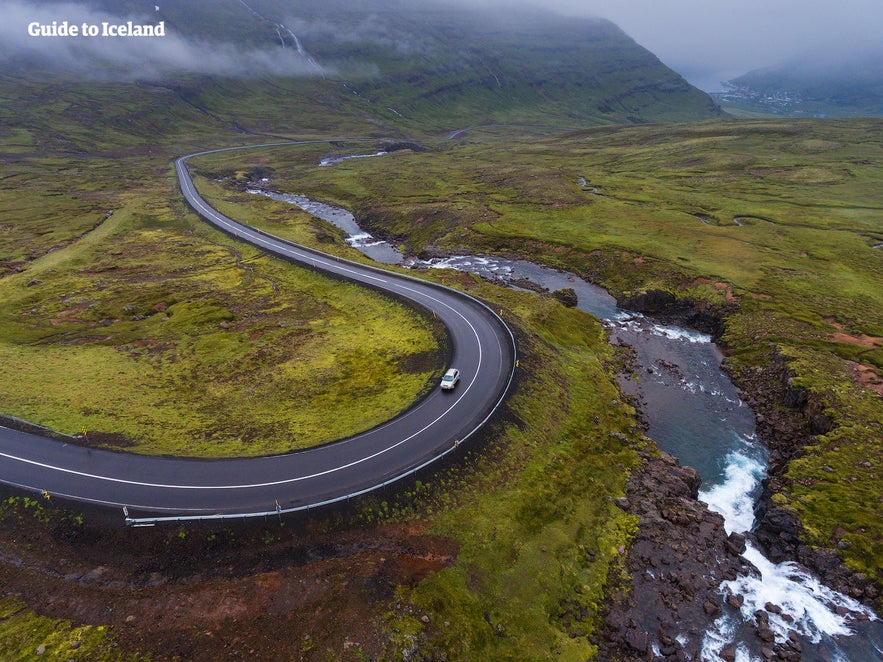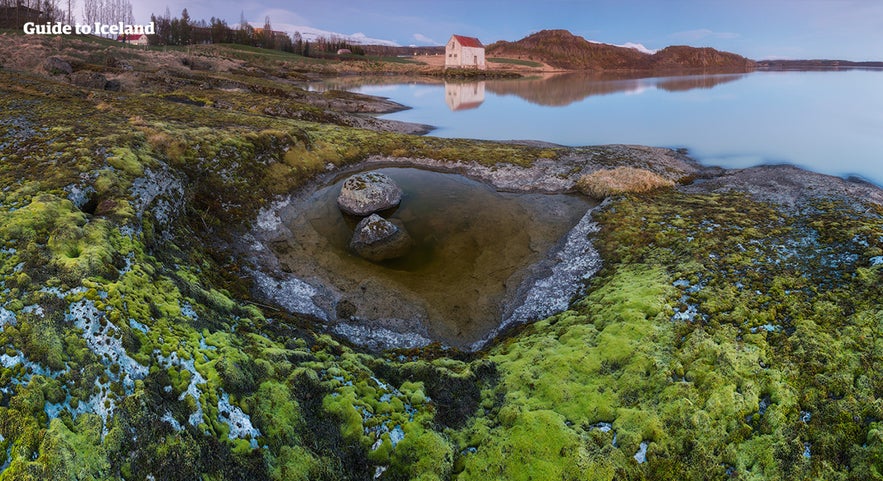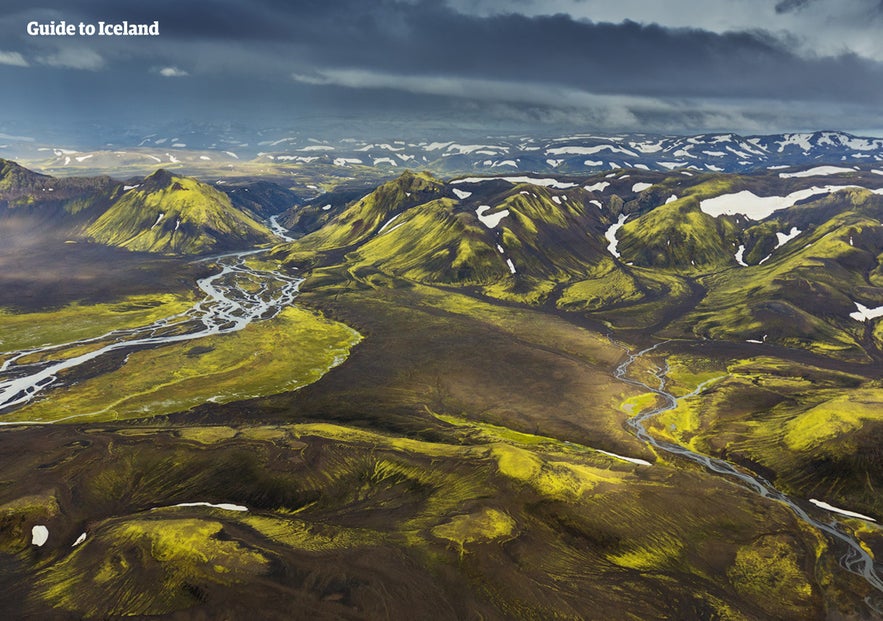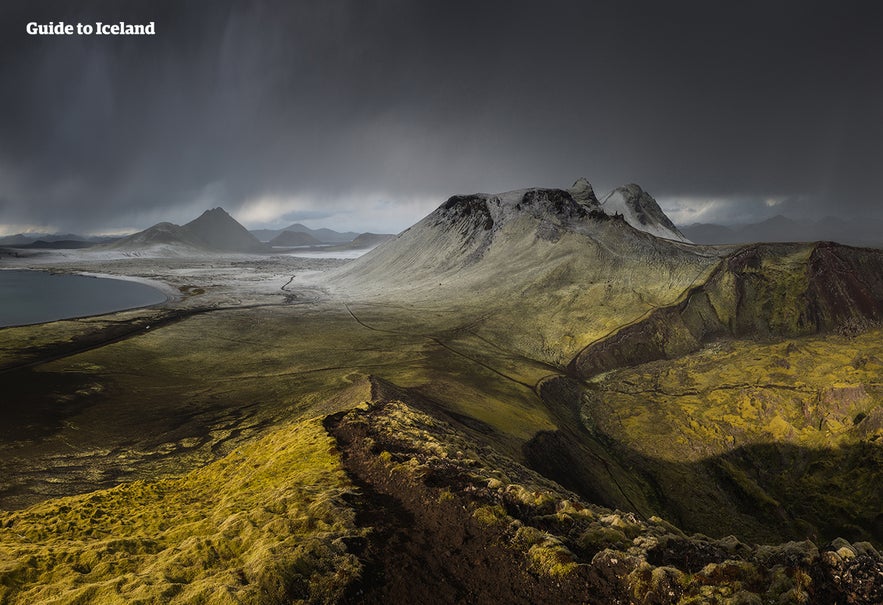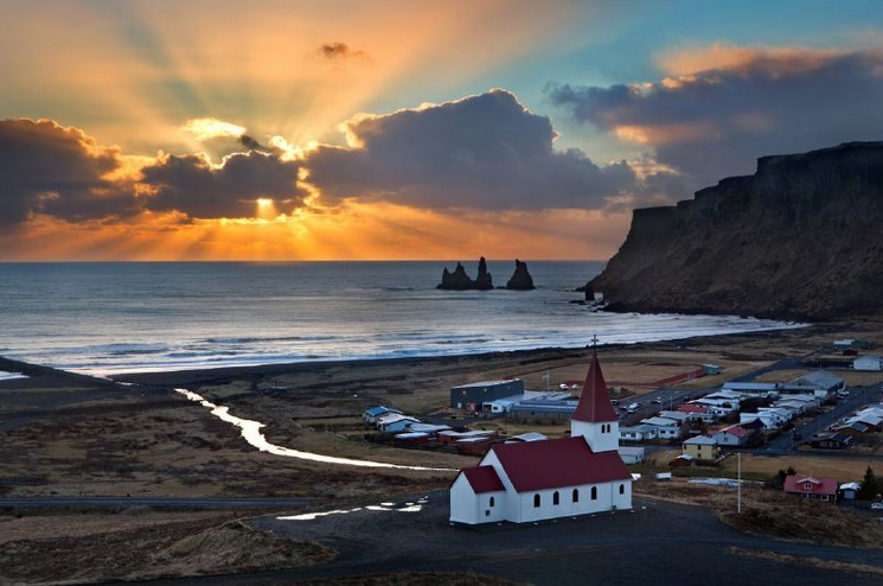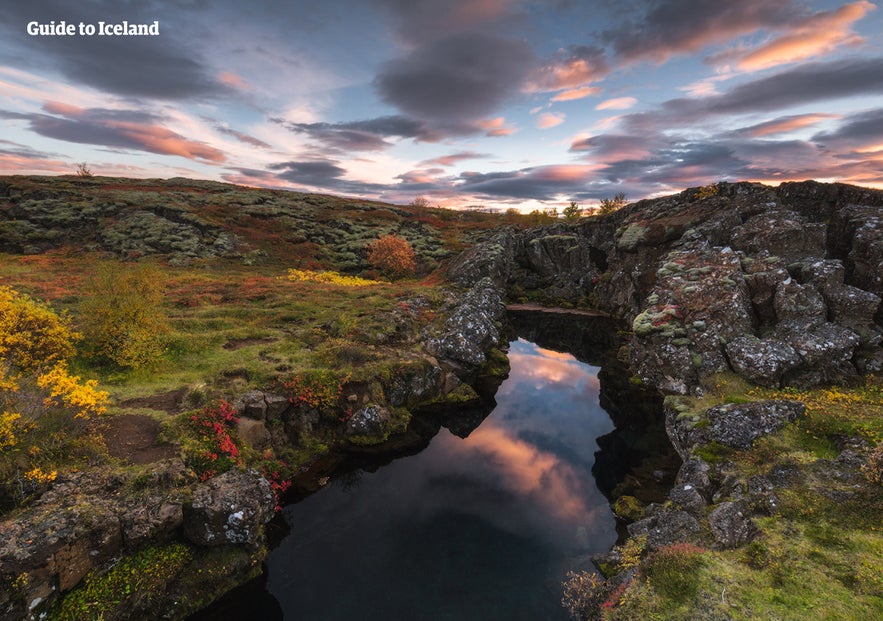
10 Iceland Travel Tips for an Amazing Vacation

- Exploring Iceland By Yourself
- Exploring Iceland With A Guided Tour
- 10. Get To Know the Locals
- 9. Don't Try To Buy Beer in Supermarkets
- 8. Self Catering - Cook Your Food
- 7. Rent a Car and Customize Your Trip
- 6. Get Off the Beaten Track
- 5. Attend a Small Town Festival
- 4. Sleep in a Farmhouse
- 3. Camping in Iceland
- 2. Bathe in a Natural Hot Spring
- 1. Sightseeing Under the Midnight Sun
Read our top 10 Iceland travel tips. Foreign friends often ask me for help planning their Iceland trip. This article includes my best advice. Learn where to go, what to do, and how to prepare for travel to Iceland. Find out the best way to see Iceland with my top tips for exploring my beautiful country.
Different people enjoy different things, and Iceland has much more to offer than can be seen and done during a single visit.
For many, traveling to Iceland is a once-in-a-lifetime experience. However, knowing what to do in Iceland and taking advantage of your time can be challenging with so many options available.
Once you've done your homework, it's worth looking at the best tours and vacation packages in Iceland to ensure you enjoy it to the fullest.
Exploring Iceland By Yourself
Self-drive tours are a great way to travel in Iceland on your own while still having an itinerary planned out for you. Many people feel it's the best way to see Iceland. Your accommodations and rental car will be booked for you but how you spend your time each day is up to you.
Booking a self-drive tour lets you visit attractions during quieter times and avoid crowds, which enables you to make the most of your Iceland visit. The rental cars are sanitized thoroughly between uses, and you can rest assured that other local businesses such as hotels and restaurants do the same.
Exploring Iceland With A Guided Tour
If your idea of a vacation does not have you driving yourself, you may want to choose an Iceland travel package that includes transportation. Many Iceland vacation packages offer transportation and accommodations to various destinations around the country.
As you plan to travel to Iceland, take note of our top 10 tips before setting out on your adventure.
10. Get To Know the Locals
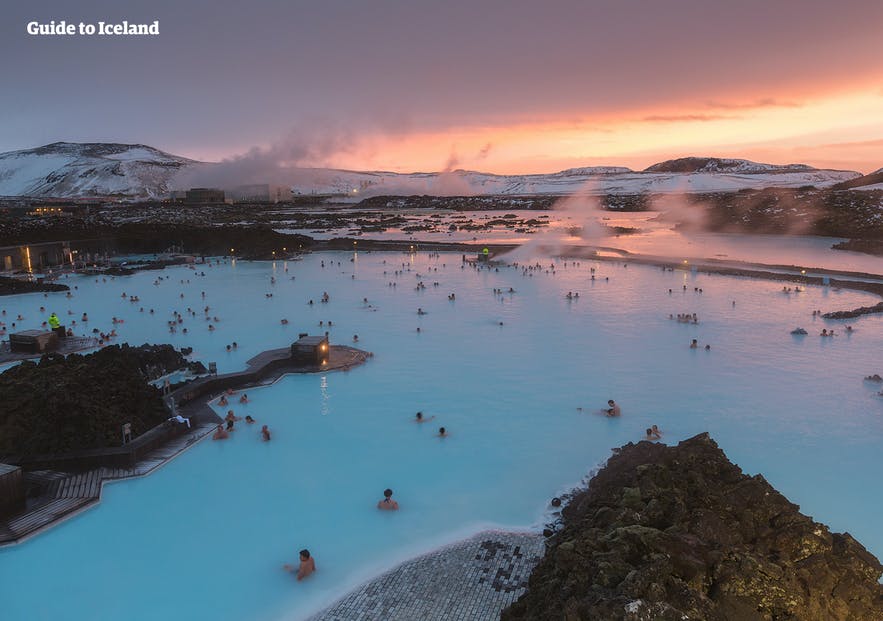
Despite living in a cold climate and an unforgiving environment, Icelanders are generally warm and friendly and treat strangers kindly.
According to the World Economic Forum, Iceland is both the most peaceful country in the world and the friendliest to visit.
Giving directions is the unofficial national sport, and most Icelanders wholeheartedly welcome the opportunity to help out people who need a little help while they travel in Iceland.
So whether you are in dire need of help or just want to have a friendly chat, don't shy away from striking up a conversation with a total stranger on our shores. It's a terrific way to get a sense of Icelandic culture and society.
Also, since all Icelandic students must learn English before they are allowed to graduate from elementary school, a language barrier will rarely, if ever, be an issue.
On your trip, it may also be worth experiencing the cozy surroundings of a traditional Icelandic cabin as one of your overnight stays. These are warm summer houses Icelanders often enjoy visiting to get away from the hustle and bustle of urban life.
If you feel awkward about approaching a total stranger in a foreign country, you can always start by contacting an Icelandic local online through our page.
9. Don't Try To Buy Beer in Supermarkets
If you plan on drinking during your Iceland visit, you need to know about Iceland's unique alcohol laws. Since beer consumption was prohibited in Iceland for the greater part of the 20th century, the Icelandic drinking culture is still in its infancy.
Despite the great nightlife in Reykjavik, many Icelanders have a strange relationship with alcohol. Alcoholic beverages are exclusively sold in state-run stores called Vinbudin (The Wine Store).
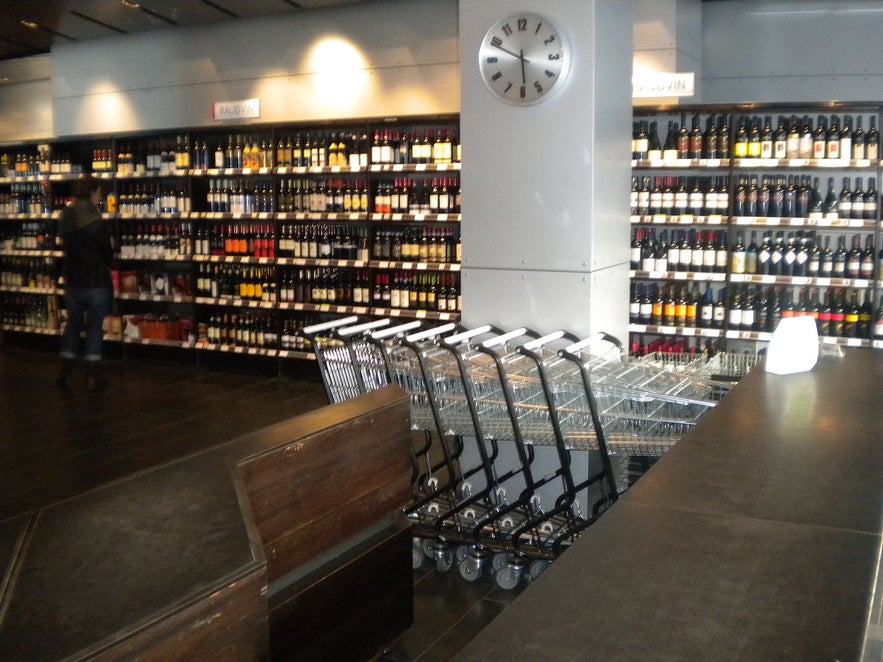 Photo from Wikimedia, Creative Commons, by Danninja. No edits were made.
Photo from Wikimedia, Creative Commons, by Danninja. No edits were made.
Supermarket shelves, on the other hand, are stocked with various brands of relatively cheap "near-beer." These are products that aim to replicate the taste of beer while eliminating its intoxicating effects.
Many travelers don't know this as it's not often mentioned in Iceland travel guides. As a result, it's relatively common to see foreign visitors victoriously pushing shopping carts full of the watered out near-beer through Icelandic supermarket aisles, oblivious to the true nature of their loot.
The near-beer might keep the party from taking off with a bang, but the upside is that it will never keep you from getting out of bed the following morning.
It's worth noting that this is one of several tourist traps in Iceland to avoid.
8. Self Catering - Cook Your Food
Although Iceland now boasts numerous fine restaurants worth a visit, eating out is one of the least economical activities you can undertake.
Eating out in Iceland can quickly eat away your entire travel budget. As with most things in Iceland, eating out and alcohol, in particular, can be pretty expensive for travelers.
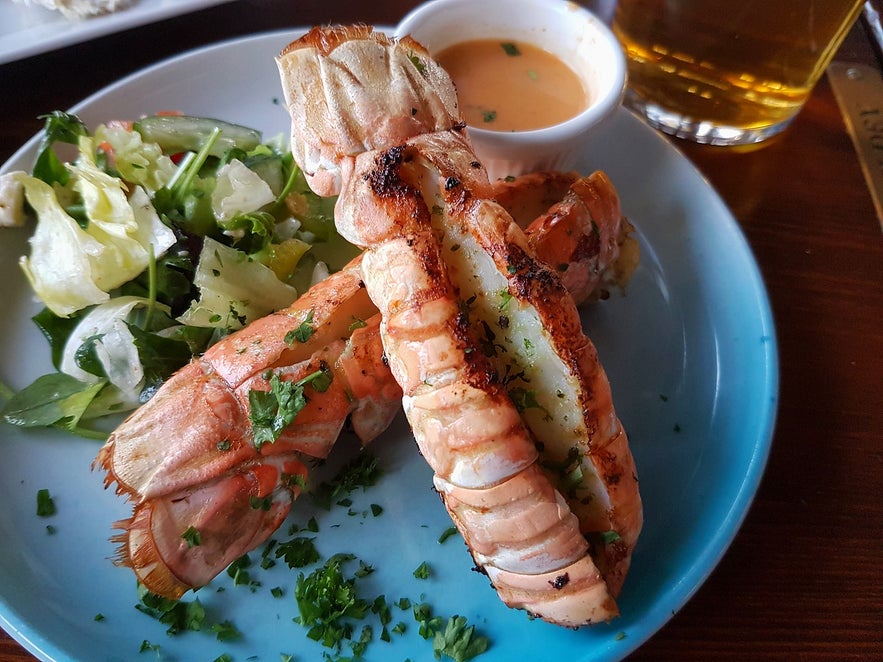 Photo from Wikimedia, Creative Commons, by Benreis. No edits were made.
Photo from Wikimedia, Creative Commons, by Benreis. No edits were made.
I do recommend eating out at least once during your stay. However, if you're traveling on a strict budget, you'd be well advised to take advantage of lunch offers.
If you don't want to eat your way through your holiday savings, you should buy your own groceries and cook your own food.
By making use of the kitchens found in every hostel, guesthouse, and campsite in Iceland, your grocery bill for two to three days will be the price of a single meal in an average restaurant.
I recommend cooking from Icelandic ingredients and buying food items that are unique to Iceland, such as the lamb, the skyr, and the fresh fish.
You should also never buy bottled water.
Iceland is lucky enough to have a very high-quality freshwater supply running from every faucet. This will help you save money for the more memorable parts of your trip.
7. Rent a Car and Customize Your Trip
Icelandic weather is highly dynamic and unpredictable.
When heading out on a domestic holiday, many Icelanders have the habit of "following the weather." This means that they simply drive towards the part of the country which has the best weather at the moment of departure.
No Iceland trip should be considered complete without time spent on the open country roads. You should consider renting a car on your trip to experience total freedom and control the pace of your journey.
Self-drive tours offer the best flexibility for your trip. You'll be able to customize your experience and change plans when needed based on the weather patterns. This way, you can allow more time for the places you're enjoying.
The total length of Iceland's Ring Road is 828 miles (1,332 kilometers).
This means that technically you could drive around the entire island in a couple of days. However, this wouldn't leave you any time to stop, explore, and take in the sights. In my opinion, you should spend at least ten days driving the Ring Road.
If, however, you're planning to spend a week or less in Iceland, I recommend limiting your travel to one region. This way, you can take advantage of some great adventures along the way.
The Snaefellsnes Peninsula, often referred to as "Iceland in miniature" because of its diverse landscapes, could easily be covered in two days.
Such a journey would allow you to experience many extraordinary sites.
This could include:
- The famous Kirkjufell mountain (as featured in "Game of Thrones")
- Snaefellsjokull glacier
- Arnarstapi village
- The beautiful black church in Budir
6. Get Off the Beaten Track
Iceland is dotted with unique places where you can find solitude and total tranquility.
If you choose to venture away from the most popular tourist spots, you are bound to experience a sublime encounter with the true spirit of the land.
Explore the Eastfjords and Westfjords, Iceland's oldest landmasses.
The Eastfjords and Westfjords contain ancient fishing outposts, spectacular mountain views, and countless hiking trails awaiting travelers seeking an authentic travel experience.
You would also be well advised to explore Iceland's magnificent interior, known as the Icelandic Highlands.
Covering more than half of the country, the Highlands are home to many of Iceland's most sublime landscapes. The majority of Iceland's most beautiful natural attractions can be found there.
The Icelandic Highlands is an uninhabited natural sanctuary situated far from human settlements.
These untouched natural expanses offer a chance to connect with nature on a level that can only be experienced in a handful of exceptional places on this planet.
Traveling into the Highlands takes you away from crowds. For this reason, you should always prepare thoroughly for your journey or join a Highland Tour in the company of an experienced guide.
It is imperative to understand that the Icelandic wilderness is as beautiful as it is fragile.
Due to the high volume of volcanic ash, the soil is exceptionally vulnerable and susceptible to erosion. With the ever-growing number of visitors coming to Iceland to seek out the untouched wilderness, many areas have become subject to unprecedented strain. Please help us protect the delicate environment by always considering the fragile flora of our island, wherever you may find yourself.
Iceland's wilderness is unique because it is mostly intact and undisturbed. As Icelanders and visitors, it is our responsibility to do our best to keep it that way. Don't stray from the walking paths. And remember that off-road driving is forbidden in Iceland, and it's penalized with a fine or imprisonment.
This is because off-road driving is likely to cause soil degradation and, with it, irreversible damage to the fragile environment.
- See also: 20 Hidden Gems in Iceland
5. Attend a Small Town Festival
Due to general poverty and an under-developed transport system, Icelandic towns and villages were virtually isolated from one another up until the second half of the 20th century.
The population was extremely sparse, with the average person rarely straying far from their place of birth. Consequently, each small town developed its own characteristics in accordance with its natural environment.
Although Iceland has been thoroughly modernized and the general population has become increasingly homogenous, the townspeople of rural Iceland remain devoted to their cultural roots. Throughout the year, festivals are held in almost every small Icelandic town and village, which thematically reflect the historical and environmental soil from which they sprang.
Siglufjordur, for example, hosts the Danish Days festival in mid-August, honoring the town's historical connections with Denmark. In contrast, Dalvik hosts Great Fish Day in the north celebrating seafood.
Each town occupies its own space on the calendar, attracting visitors to join the townspeople to celebrate local music, food, dance, and drink.
If you are open-minded and enjoy a gathering of good people, you should pick a festival or one of Iceland's best events that fit your schedule and join in the fun.
4. Sleep in a Farmhouse
Spending a night in one of the many farm-stays around Iceland is another excellent way to get an authentic and first-hand feel for Icelandic culture. A significant number of farmers offer bed and breakfast lodgings to travelers.
Farm stays offer various options ranging from simple shared rooms to private huts and cottages. It's also worth noting that locally sourced food is almost always available.
Many farmers also offer horse riding tours and guided walks, and some are even willing to let you participate in the farm activities.
Remember that it is always better to book a farm holiday well in advance, especially if you want to secure the most affordable accommodation.
3. Camping in Iceland
There's no better way to spend a summer night in Iceland than in a tent.
Camping is a fool-proof method of gaining and maintaining your necessary contact with nature. Nothing comes close to the experience of lying in your sleeping bag after a long day of traveling while being lulled to sleep by the wildlife's peaceful evening song.
 Photo by Pavel Brodsky
Photo by Pavel Brodsky
And since most Icelandic towns and villages have their own campsite, there will always be a place where you can set up your tent.
Camping with three or fewer tents is permitted on uncultivated public land for a single night unless you see a sign to the contrary. However, please note that wild camping in Iceland's three national parks is strictly forbidden. You should never camp close to or on farms without seeking permission. However, most farmers are willing to host campers for a minimal fee.
Remember to respect the environment and always take the fragile nature of the Icelandic vegetation into consideration when setting up camp.
 Photo by Sonali Deo
Photo by Sonali Deo
Please be aware that camping in the wilds of Iceland is not legal if you are in a campervan, tent trailer, or collapsible camper. If you're camping in one of these vehicles, you must use one of the many dedicated campsites around the country each night.
If you decide to stray off the beaten track and go far into the wilderness, you should always notify someone of your travel plans beforehand and prepare yourself for any and all kinds of weather.
Remember that there is no bad weather in Iceland, only bad clothing.
If you're considering trying wild camping in Iceland, we highly recommend you educate yourself further on the dangers of Icelandic nature in advance. This will help you make the most of your experience while remaining safe.
Camping in Iceland can transform your trip and allow you to enjoy Iceland's stunning surroundings and wondrous terrains more flexibly.
2. Bathe in a Natural Hot Spring
Outdoor public bathing in warm pools is a deep-rooted Icelandic tradition, dating back to the Viking days of the original settlement. In Iceland, public bathing is much more than a mere pastime activity.
Icelandic pools and public baths are community centers where people of all ages and professions gather to catch up with friends, relax after a hard day of work, or recover from a long night of excessive indulgence.
 Photo from Hot Spring Hike of Reykjadalur Valley
Photo from Hot Spring Hike of Reykjadalur Valley
I recommend visiting a public bath or a swimming pool at least once on your Iceland trip. Nothing comes close to finding a natural hot spring in the wilderness and taking in the energy straight from nature's core.
There are several natural hot springs close to the greater Reykjavik area, including the warm river of Reykjadalur, which is a personal favorite.
There are many guided hot spring tours on offer. Two of the best are the Reykjadalur hot spring tour and the Landmannalaugar hiking and hot spring tour.
1. Sightseeing Under the Midnight Sun
You can expect some of Iceland's most popular attractions to be a bit crowded during the long summer days of the high season. But if you are indeed visiting in midsummer, you will be blessed by the unremitting midnight sun whose light lasts for 24 hours.
Taking advantage of the endless days by traveling at night will let you avoid the crowds and experience a personal, magical moment of timelessness in nature's amber embrace.
The roads will be silent, the towns and villages asleep, and the stillness of the bright night air will be as enchanting as the wilderness it envelopes.
Those who do not feel comfortable traveling in Iceland alone at night can always seek the assistance of a handful of experienced guides who lead small groups on midnight sun tours.
In these cases, it's often better to combine the midnight sun with some of Iceland's most dramatic landscapes and once-in-a-lifetime activities. We suggest Golden Circle tours, horse riding tours, and midnight sun mountain hiking tours.
If you are not used to the bright summer nights of the Arctic and want to sleep during the night, remember to pack a sleeping mask. A must under the midnight sun; it will help your body know when to go to sleep by better managing your circadian rhythm.
Take advantage of our top Iceland travel tips, tread carefully, be well, and have a wonderful stay!
Weitere interessante Artikel

Island im Winter – Der ultimative Reiseführer
Island ist bekannt für seine dramatischen Landschaften, die im Winter eine ganz besondere Atmosphäre ausstrahlen. Es ist die ideale Zeit, um die Nordlichter zu beobachten, Eishöhlen zu erkunden oder...WeiterlesenDie 5 besten Ausflugsziele im Hochland von Island
Islands Hochland: Wann ist es befahrbar? Was sind die besten Hochlandrouten und Sehenswürdigkeiten im Landesinneren? Das isländische Hochland erstreckt sich über 40.000 Quadratkilometer und gehört...WeiterlesenDie besten Sehenswürdigkeiten an Islands Ringstraße
Lies alles über die besten Attraktionen auf oder in der Nähe der Ringstraße in Island. Entdecke die wunderschöne Natur und die tollen Aktivitäten an Islands berühmter Route 1. Die Route 1 in Island...Weiterlesen

Lade Islands größten Reisemarktplatz auf dein Handy herunter, um deine gesamte Reise an einem Ort zu verwalten
Scanne diesen QR-Code mit der Kamera deines Handys und klicke auf den angezeigten Link, um Islands größten Reisemarktplatz in deine Tasche zu laden. Füge deine Telefonnummer oder E-Mail-Adresse hinzu, um eine SMS oder E-Mail mit dem Download-Link zu erhalten.

